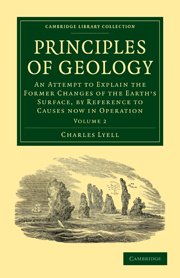 Principles of Geology
Principles of Geology Summary
We now come to the second subdivision of the inquiry explained in the preceding chapter,—the consideration of the permanent modifications produced in the material constituents of the earth's crust, by the action of animal and vegetable life.
New mineral compounds, such as might never have existed in this globe but for the action of the powers of vitality, are annually formed, and made to enter into deposits accumulated both above and beneath the waters. Although we can neither explain nor imitate the processes of animal and vegetable life whereby those substances are produced, yet we can investigate the laws by virtue of which organic matter becomes imbedded in new strata,—sometimes imparting to them a peculiar mineral composition,—sometimes leaving durable impressions and casts of the forms of animate beings in rocks, so as to modify their structure and appearance.
It has been well remarked by M. Constant Prevost, that the effects of geological causes are divisible into two great classes; those produced on the surface during the immersion of land beneath the waters, and those which take place after its emersion. Agreeably to this classification we shall consider, first, in what manner animal and vegetable remains become included and preserved in solid deposits on emerged land, or that part of the surface which is not permanently covered by water, whether of the sea or lakes; secondly, the manner in which organic remains become imbedded in sub-aqueous deposits.
- Type
- Chapter
- Information
- Principles of GeologyAn Attempt to Explain the Former Changes of the Earth's Surface, by Reference to Causes now in Operation, pp. 209 - 227Publisher: Cambridge University PressPrint publication year: 2009First published in: 1832
